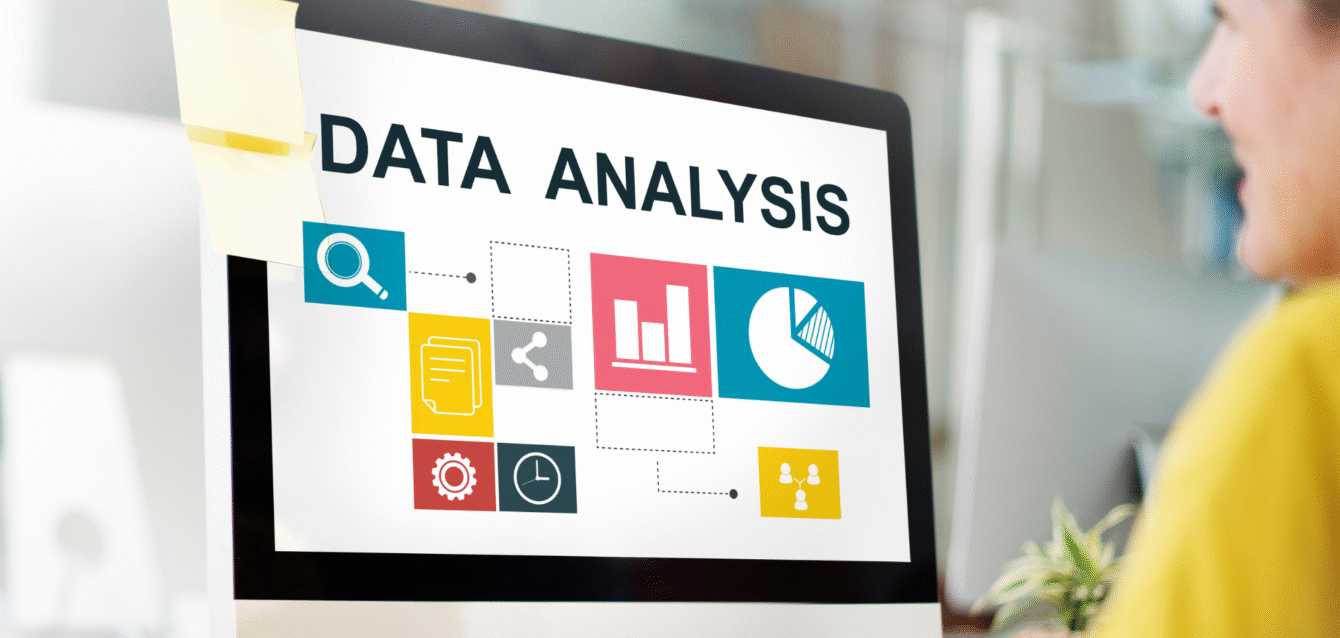Data is central to every healthcare operation, but its value depends on how it’s used.
Understanding the four types of data analytics, descriptive, diagnostic, predictive, and prescriptive is key to turning raw information into meaningful action. Whether you’re improving patient care, streamlining claims, or forecasting resource needs, these analytics types help guide decisions with clarity and purpose.
Let’s break down the 4 types of data analytics, descriptive, diagnostic, predictive, and prescriptive analytics and explore how each one helps healthcare organizations move from hindsight to foresight, and from insight to action.
Why Data Analytics Is a Business Imperative Today
The global healthcare analytics market was valued at $52.98 billion in 2024 and is projected to reach $198.79 billion by 2033, growing at a CAGR of 14.85%. According to Grand View Research, North America holds the largest market share (48%), driven by widespread adoption across hospitals, payers, and provider networks.
Among the four types of data analytics, descriptive analytics leads with a 45.9% share, but predictive data analytics is gaining momentum for its ability to forecast patient risks, resource needs, and operational bottlenecks.
Here are six priorities where analytics is making a difference:
- Reducing patient wait times with predictive data analytics that forecast demand and optimize scheduling
- Improving care coordination using diagnostic analytics to uncover gaps in communication and follow-through
- Lowering readmission rates through prescriptive analytics that recommend timely interventions
- Enhancing claims accuracy by applying descriptive analytics to identify patterns in denials and documentation errors
- Optimizing staffing models with predictive analytics based on historical utilization and acuity levels
- Supporting value-based care through descriptive and diagnostic analytics that track performance and cost metrics
If you’re exploring what prescriptive analytics can actually do or trying to make sense of how predictive and descriptive analytics fit into your workflow, the real question is: how can your team use data to make decisions that feel confident, timely, and grounded in reality?
Types of Data Analytics Explained
In healthcare, data represents more than just numbers. It carries context, reveals insights, and guides decisions. When applied thoughtfully, descriptive, diagnostic, predictive, and prescriptive analytics help care teams make decisions that are timely, well-informed, and aligned with both patient needs and operational goals.
What Is Descriptive Analytics?
This is your rearview mirror. Descriptive analytics summarizes historical data to answer questions like: “What were our readmission rates last quarter?” or “How many claims were denied last month?”
It’s the foundation of reporting, clean, structured, and visual. Dashboards, KPIs, and monthly reports all fall under this category.
Use Case: A hospital uses descriptive analytics to track patient admission rates over the past year. By analyzing monthly and seasonal patterns, the care team identifies peak periods, such as flu season or post-holiday surges where bed occupancy consistently exceeds 90%.
With this insight, the hospital adjusts staffing schedules, increases temporary bed capacity, and coordinates with nearby clinics to manage overflow. Additionally, they use dashboards to monitor real-time admission trends and align resource allocation with expected demand.
This proactive approach improves patient experience, reduces wait times, and ensures better utilization of hospital infrastructure.
What Is Diagnostic Analytics?
Once you know what happened, the next question is: why?
Diagnostic analytics dives deeper into patterns and anomalies. It uses techniques like drill-down, data mining, and correlation analysis to uncover root causes.
Use Case: A payer notices a sudden spike in claim denials. Using diagnostic analytics, they trace the issue to missing documentation in provider submissions. By identifying the exact error patterns, they implement targeted training and improve claim approval rates.
Predictive Data Analytics: What Might Happen Next?
This is where things get exciting. Predictive analytics uses historical data, statistical models, and machine learning to forecast future outcomes.
It doesn’t promise certainty, but it offers probability. Think patient risk scoring, appointment no-show prediction, or reimbursement forecasting.
Use Case: A provider group applies predictive data analytics to identify patients at high risk of readmission. Based on risk scores, they proactively schedule follow-up care and remote monitoring, reducing readmission rates by 18%.
What Is Prescriptive Analytics?
Prescriptive analytics goes one step further. It recommends actions based on predicted outcomes. It’s the closest analytics gets to decision automation.This type often involves optimization algorithms, simulation models, and AI-driven recommendations.
Use Case: A health system uses prescriptive analytics to optimize operating room (OR) scheduling. By factoring in surgeon availability, patient acuity, and equipment usage, they reduce idle time and improve surgical throughput.
Predictive vs Prescriptive Analytics
Building a responsive healthcare strategy requires understanding how predictive and prescriptive analytics work together.
- Predictive analytics uses historical data to forecast future events, like patient admission surges, claim denials, or staffing shortages.
- Prescriptive analytics takes those forecasts and recommends specific actions, such as adjusting staff schedules or modifying billing workflows.
Together, they help healthcare organizations move from reactive to proactive decision-making, especially in high-pressure environments like emergency departments or multi-specialty clinics.
Predictive vs Descriptive Analytics
These two types of analytics serve different purposes but are both essential in healthcare operations.
- Descriptive analytics focuses on past performance, summarizing metrics like readmission rates, average length of stay, or monthly revenue.
- Predictive analytics looks ahead, helping teams anticipate future trends such as seasonal patient volume spikes or potential bottlenecks in claims processing.
Descriptive analytics supports reporting and compliance, while predictive analytics enables strategic planning and resource optimization.
A diagnostic center reviews descriptive analytics to understand last quarter’s imaging volumes and identifies that MRI scans peaked in December.
- With predictive analytics, the center forecasts a similar trend for the upcoming quarter.
- They proactively schedule technician shifts and optimize machine usage to handle the expected demand.
This shift from reactive reporting to proactive planning improves throughput and patient satisfaction.
Descriptive vs Diagnostic Analytics
Understanding what happened is only part of the story, knowing why it happened is what drives improvement.
- Descriptive analytics shows trends and patterns (e.g., patient wait times increased last quarter).
- Diagnostic analytics explains the reasons behind those trends (e.g., staffing gaps, inefficient triage protocols).
By combining both, healthcare teams can monitor performance and uncover root causes of operational challenges, leading to more targeted and effective interventions.
A mid-sized clinic notices through descriptive analytics that appointment cancellations increased by 20% last month.
- Diagnostic analytics reveals the root cause:
- Most cancellations occurred in the 9–11 AM slot.
- Patients cited long wait times and lack of parking availability.
The clinic adjusts appointment scheduling and coordinates with nearby facilities for parking support, leading to a 15% drop in cancellations the following month.
How These Analytics Types Work Together
In healthcare, analytics is more than a toolkit, it’s a layered strategy that adapts to the unique needs of hospitals, payers, provider groups, and specialty clinics. Each type of analytics contributes to a broader decision-making framework that supports care delivery and operational clarity.
- Descriptive analytics helps hospitals track patient volumes, monitor readmission rates, and understand seasonal demand patterns.
- Diagnostic analytics enables payers to investigate claim denials, uncover billing inconsistencies, and identify compliance gaps.
- Predictive data analytics supports provider groups by helping them plan staffing, identify high-risk patients, and schedule follow-up care.
- Prescriptive analytics allows specialty clinics and health systems to make informed decisions about treatment paths, resource allocation, and scheduling.
When these 4 types of data analytics are integrated into daily operations, they create a feedback loop that improves clinical clarity, strengthens planning, and supports financial accountability. Choosing the right analytics partner is essential, it’s not just about the tools, but about turning data into meaningful action that aligns with your care goals.
Real-World Impact: CaliberFocus in Action
At CaliberFocus, our strength lies in designing analytics ecosystems that reflect the operational realities of U.S. healthcare. For a multi-specialty provider group, we applied a layered analytics framework tailored to their care delivery and administrative workflows:
- Descriptive analytics dashboards were configured to track patient volumes and surface patterns in service demand, helping the team stay ahead of seasonal fluctuations.
- Diagnostic analytics workflows were structured to uncover the underlying reasons for appointment no-shows, enabling more effective scheduling and patient engagement strategies.
- Predictive analytics models were developed to estimate staffing needs based on historical utilization and patient acuity, supporting proactive workforce planning.
- Prescriptive analytics alerts were embedded into scheduling systems to guide resource allocation in real time, ensuring alignment with clinical priorities.
This integrated approach led to measurable outcomes: a 27% improvement in operational efficiency and a 19% reduction in patient wait times.
Final Thoughts: Why CaliberFocus Is Your Healthcare Analytics Partner
Understanding the types of data analytics is just the beginning. Applying them effectively in healthcare requires domain knowledge, technical depth, and strategic alignment.
At CaliberFocus, we bring all three. Whether you’re modernizing BI platforms, building predictive models, or automating decisions, we help you turn data into direction.
Let’s build your healthcare analytics roadmap layer by layer, insight by insight.
FAQs
The four types of data analytics, descriptive, diagnostic, predictive, and prescriptive analytics each serve a unique purpose. Descriptive analytics summarizes what’s happening in your practice. Diagnostic analytics explains why it’s happening. Predictive data analytics forecasts future trends like patient inflow or denial rates. Prescriptive analytics recommends actions to improve outcomes. At CaliberFocus, we assess your operational maturity to deploy the right mix for measurable impact.
Descriptive analytics helps you understand historical performance, like patient wait times, claim volumes, or revenue cycles. It’s the foundation for deeper insights. We use it to build dashboards that give healthcare leaders a clear view of their operations.
Diagnostic analytics dives into the “why.” For example, if your reimbursements are delayed, it can trace the issue to coding errors or scheduling gaps. We’ve helped mid-sized clinics use diagnostic analytics to reduce billing errors and improve staff utilization.
Predictive analytics uses historical data to forecast future events like patient no-shows, seasonal demand, or claim denials. At CaliberFocus, our predictive models are built on clean, validated data to ensure accuracy and relevance.
Prescriptive analytics suggests what actions to take based on predictions. While AI enhances its capabilities, rule-based systems and optimization models can also drive decisions. We tailor prescriptive solutions based on your data complexity and goals.




